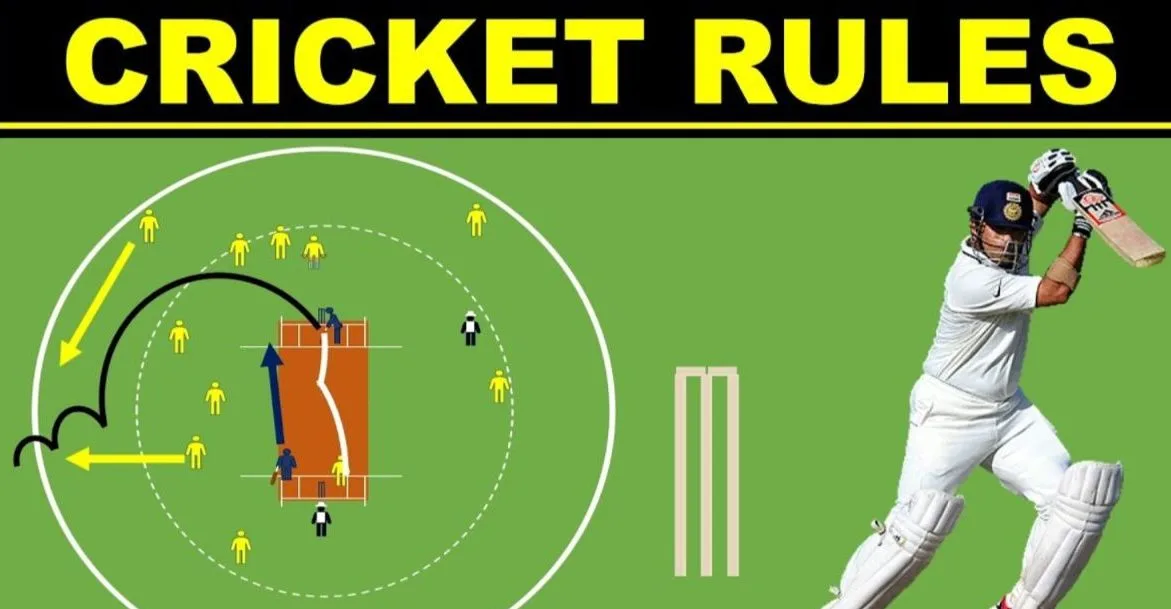introduction
Cricket is one of the most beloved sports in the world, captivating millions with its blend of skill, strategy, and tradition. From the manicured lawns of England to the dusty pitches of India, cricket has a universal appeal that transcends borders and cultures. In this article, we’ll delve into the heart of cricket by exploring its 15 rules of cricket, unraveling its complexities, and celebrating its rich history.
The Field of Play:
Cricket is play on a field with a rectangular pitch at its center, 22 yards long and 10 feet wide. This pitch is the battleground where bat clashes with ball in a contest of skill and nerve.
The Players:
Each team consists of 11 players, with one team batting and the other team fielding. The batting team’s objective is to score runs, while the fielding team’s aim is to dismiss the batsmen and restrict the scoring.
Scoring Runs:
Batsmen score runs by hitting the ball and running between the wickets. A run is completed when the batsmen safely reach the opposite end of the pitch. Runs can also be score by hitting boundaries, either along the ground (four runs) or over the boundary rope (six runs).
Dismissal Methods: A batsman can be dismissed in several ways:
- Bowled: The ball hits the stumps and dislodges the bails.
- Caught: The batsman hits the ball and it is caught by a fielder without bouncing.
- LBW (Leg Before Wicket): The ball hits the batsman’s leg and would have hit the stumps if the leg wasn’t in the way.
- Run Out: The batsman fails to reach the crease before the fielding team dislodges the bails.
- Stumped: The wicket-keeper removes the bails while the batsman is out of the crease.
- Hit Wicket: The batsman accidentally knocks off the bails while attempting a shot.
- Handled the Ball: The batsman touches the ball with a hand not holding the bat.
- Obstructing the Field: The batsman intentionally obstructs the fielding side.
The Bowler’s Role:
The bowler delivers the ball to the batsman from one end of the pitch. They must bowl within the rules, ensuring they do not overstep the crease or bowl dangerous deliveries above waist height.
No-Ball and Free Hit:
If the bowler oversteps the crease or delivers a waist-high full toss, it’s called a no-ball. The batting team gets a run, and the next delivery is a free hit, where the batsman cannot be dismiss except by a run-out.
Innings and Overs:
Each team has a turn to bat and bowl, known as an innings. In limited-overs cricket, each innings is comprised of a set number of overs (usually 50 in One-Day Internationals and 20 in T20 Internationals). In Test cricket, there are no limits on overs, and the match is play over five days.
Setting Targets:
In limited-overs matches, the batting team sets a target for the opposing team to chase. The bowling team aims to restrict the batting team’s score below a competitive total.
Fielding Restrictions:
In limited-overs cricket, there are fielding restrictions in place to encourage aggressive batting. During the first ten overs, only two fielders are allow outside the inner circle. This increases to four fielders between overs 11 and 40, and five fielders in the final ten overs.
Powerplays:
Powerplays are periods of the game where fielding restrictions apply. They are typically use to maximize scoring opportunities for the batting team and often lead to exciting passages of play.
Umpire’s Decision:
On-field umpires are responsible for officiating the match, making decisions on dismissals, and enforcing the rules. The third umpire assists with close decisions, using technology to review replays.
Review System:
Teams have the option to challenge the umpire’s decision using the Decision Review System (DRS). Each team is allot a certain number of unsuccessful reviews per innings.
Penalty Balls: There are three types of penalty balls in cricket:
- No Ball: When the bowler oversteps the crease or delivers an illegal delivery.
- Wide Ball: When the ball is too wide for the batsman to hit.
- Dead Ball: When the ball becomes unplayable due to external factors.
Bye and Leg Bye:
Byes and leg byes are runs score off the bat or the batsman’s body. Byes occur when the ball passes the batsman without hitting the bat, while leg byes occur when the ball hits the batsman’s body or clothing.
Fair Play:
Cricket is a game that values sportsmanship and fair play. Players are expect to uphold the spirit of the game, respecting the rules and their opponents at all times.
Also Read : Fastest ODI Century for India: Record-Breaking Performances
conclusion
Cricket is more than just a sport; it’s a way of life for millions of fans around the world. Whether played on a village green or in a packed stadium, cricket brings people together, fostering friendships and creating lasting memories. So, the next time you hear the sound of leather on willow, take a moment to appreciate the beauty of this timeless game.
This article has explored the 15 rules of cricket, providing an insight into the intricacies of the sport. From the elegance of a cover drive to the drama of a last-ball finish, cricket never fails to enthrall and enchant. So, grab your bat, don your whites, and step onto the hallowed turf of the cricket field. The game awaits.




